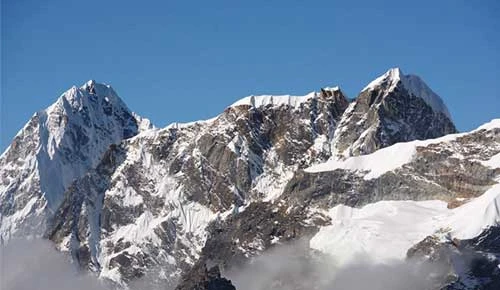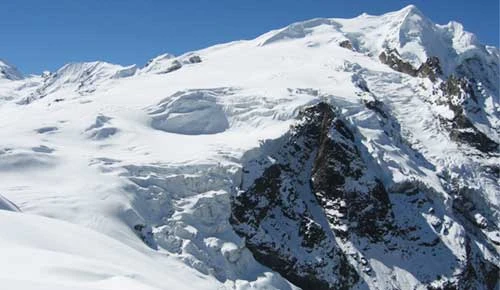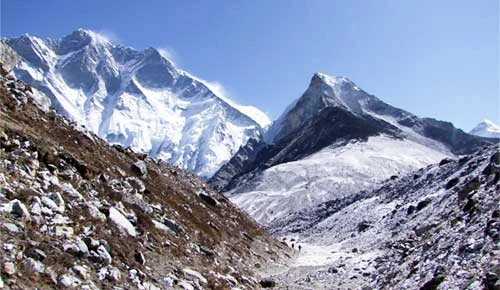Shower and Laundry Facilities During the EBC Trek
The trek to Everest Base Camp is one of the most famous and desired treks in the world. It gives trekkers a chance to see Mount Everest, the world's highest peak, in its purest form. However, it's important not to forget how important it is to keep clean while hiking, even with all the beautiful scenery and difficult trails.
Experience the opportunity to immerse yourself in the rich Sherpa culture as you journey through the challenging terrain of the Everest region on the EBC trek, bringing you closer to the sky at the foot of Sagarmatha.
As adventurers set out on this once-in-a-lifetime trip, they face not only physical hurdles but also the need to protect their health and well-being in places that are often harsh and unpredictable. Because of the high altitudes and changing weather, trekkers must put hygiene first to stay healthy and make sure they have a safe and fun trip.
In this blog, we will break down the details of the essential hygiene amenities, such as showers and laundry services, while trekking to Everest Base Camp.
Table of Contents
Understanding the Accessibility
If you are planning to do adventurous trekking to Everest Base Camp, then that's a great choice. However, before lacing your boots and heading towards the trial, it's important to know about the hygiene services in the mountains.
The trek takes you to the remote areas of the Everest region of Nepal, where the simplest comfort feels like luxury. The teahouses along the route offer basic and necessary services that feel like luxury during your trekking phase at Everest Base Camp.
Now you may be wondering, "Do they even have showers and laundry up there?" The answer is yes, sort of. As you can see, there are places along the trail where you can take a shower and do your laundry. They're not like the ones back home, though.
Shower facilities could range from basic to slightly more comfortable. Sometimes, if you're lucky, you might get a hot shower, but most likely, it will just be a bucket shower. What about laundry services? You can also get them, but you can't expect fancy machines—most of the time, you'll have to wash your clothes by hand or use basic washing services.
Here's the thing: these services are not as easily accessible as they are in the city. You'll need to make some advance plans and possibly adjust your expectations. As long as you plan ahead and are flexible, though, keeping clean and fresh is totally possible.
Shower Facilities and Types
Shower facilities during the Everest trek differ as you ascend in altitude. At lower altitudes, you can enjoy refreshing gas-heated showers in teahouses. As you move to mid-altitudes, the showers are solar-heated, but keep in mind that they are dependent on the weather conditions. Bucket showers are a common practice at higher elevations, where they are heated over a stove. Every type showcases the difficulties of the trek and the deep cultural experience it offers.
Let's learn more about the different types of shower facilities available in different locations during the base camp trek.
Gas-heated shower
Lower-altitude teahouses and hotels along the Everest trek have gas-heated showers, which are a wonderful pleasure. These showers provide you with the comfort of familiar amenities, offering a much-needed break from the challenging terrain and physical demands of the journey. With the help of gas heaters, these water sources provide a reliable source of hot water, guaranteeing a boosting and refreshing experience following a long day of hiking.
Also, gas-heated showers provide a glimpse into the infrastructure and modern amenities available in the trek's lower-altitude areas. You can appreciate the incredible efforts made by teahouses and lodges to cater to your every need, which undoubtedly enhances the overall trekking experience to a whole new level.
However, when altitude rises and you start to travel to more remote locations, the supply of gas-heated showers may be limited, giving way to alternate bathing methods such as solar-heated showers or bucket showers. However, for those exploring the lower parts of the Khumbu region, the availability of gas-heated showers is a welcome luxury, offering a sense of comfort amidst the excitement of the journey.
Solar Heated Shower
It's quite common to come across solar-heated showers while trekking to mid-altitude regions along the Everest Base Camp route. These showers make use of solar panels to capture the sun's energy, offering a sustainable and environmentally friendly method of heating water in mountainous areas. Travelers can take use of the convenience of hot water for a refreshing shower while traversing the stunning landscapes, as the sun's radiant rays provide the necessary energy.
Solar-heated showers are known for their positive impact on the environment. These showers help to reduce our dependence on non-renewable resources such as gas or electricity, which in turn minimizes the ecological footprint of the trek. This is based on the concepts of responsible tourism and conservation efforts in the Himalaya's fragile ecosystem.
However, the availability of hot water from solar-heated showers can be affected by weather conditions. On cloudy or snowy days, the efficiency of solar panels may be affected, resulting in water that is not as warm as desired. As trekkers go through the unpredictable mountain weather, it is crucial for them to stay flexible and ready for changes in water temperature.
Bucket Shower
Bucket showers are a popular bathing method in remote and off-grid areas, including the various locations along the trek. As you make your way to higher elevations towards Everest, you might come across these basic yet efficient showers because of the challenging terrain and lack of modern amenities.
The idea behind a bucket shower is simple: water is heated in a bucket or other container over a stove or fire. After the water has warmed up to a pleasant temperature, you can gently pour it over your body using a mug or a smaller container. With this simple technique, you can easily stay clean and hygienic, no matter how far off the beaten path you may be.
Although bucket showers may not provide the convenience and luxury of gas or solar-heated showers, they do offer a unique and refreshing experience. Heating the water over a stove brings a nostalgic touch to the bathing experience, allowing you to feel a deeper connection with the surrounding nature and the traditional customs of the Himalayas.
Using a bucket shower also requires being mindful and conscious of water conservation. Given the limited amount of water that can be heated in the bucket, you will develop the skill of using water more efficiently. They come to truly appreciate the value of water in remote locations where access can be quite challenging.
Shower Facilities Along the Everest Base Camp Trek Route
Location | Shower Facility |
|---|---|
Lukla | Gas-heated showers in teahouses |
Namche Bazaar | Gas-heated showers in teahouses |
Tengboche | Gas-heated showers in select teahouses |
Dingboche | Solar-heated showers, weather dependent |
Lobuche | Solar-heated showers, availability varies with weather |
Gorak Shep | Bucket showers due to remoteness and high altitude |
Everest Base Camp | Limited or no shower facilities available, bucket showers may be the only option |
Laundry Facilities and Options
Doing laundry during the Everest Base Camp trek can be a bit tricky, especially since packing numerous outfits isn't practical for such a long journey. But fear not! There are solutions to keep your clothes fresh without overloading your backpack.
Here are some options for laundry during the trek:
Expert Laundry Service
Some places along the base camp route offer professional laundry services. These locations are typically found in lower neighborhoods, such as Lukla, Namche Bazaar, and some lodges in Dingboche. Expert laundry services are provided by qualified workers who understand how to clean clothes properly. They can help remove difficult stains and ensure that your clothing is thoroughly cleaned. Using these services might provide a welcome relief from washing clothes by hand. It allows you to relax and take in your journey without thinking about laundry. If you need your clothes completely cleaned, these experienced services can help.
Staff-Handled Laundry
Some areas along the base camp route do not have professional laundry facilities available. Instead, the workers at lodges and teahouses will handwash your clothes. They clean them as thoroughly as possible using water, soap, and, on occasion, brushes. While not as thorough as a professional service, it will keep your clothes decently clean during your journey. It's also an opportunity to support the local community and interact with the individuals you encounter along the way.
Self Washing
When it comes to laundry during the Everest Base Camp hike, the alternatives are limited yet practical. Professional laundry services are accessible in some lower elevation areas, such as Lukla and Namche Bazaar, but are rare at higher elevations. Staff at lodges and teahouses frequently do laundry by hand, which may not always satisfy requirements. However, many trekkers choose to do it themselves. While this takes some effort, it ensures a level of cleanliness that can be trusted and adds a more personal touch to the journey.
Drying garments can be difficult due to the changeable weather, but hikers get creative. Some use community drying rooms, while others hang their clothes near heated fireplaces in dining halls. These innovative solutions not only assist in drying clothes but also build a sense of community among hikers as they share advice and experiences along the way.
Laundry Services Along Everest Base Camp Trek Route
Location | Availability | Cosr Per kg | Detail |
Lukla | Many options | Around 5 to 8 USD per kg | Washing machines or hand-washing service |
Namche Bazaar | Many option | Around 5 to 8 USD per kg | Washing machines or hand-washing service |
Tengboche | Limited | 8 to 10 USD per kg (probably higher) | Mostly hand-washing service only |
Dingboche | Limited | 8 to 10 USD per kg (probably higher) | Mostly hand-washing service only |
Lobuche | Rare | Likely more than 10 USD | Cold temperatures and lack of drying options |
Gorak Shep | Rare | Likely more than 10 USD | Cold temperatures and lack of drying options |
Laundry Tips
To make your laundry experience easier during your Everest adventure, follow the helpful tips provided below:
- When preparing for the trek, remember to layer your clothes efficiently to maximize the use of your limited wardrobe and minimize the need for frequent washing.
- Opt for clothing made of odour-resistant and quick-drying materials to reduce the frequency of washing and maintain hygiene during your trek.
- Bring biodegradable detergent to lessen your impact on the environment while washing your clothes on the trail.
- Instead of washing all your clothes at once, consider washing them in small batches every few days to conserve energy and resources.
- Sink washing is a common practice on the EBC trail, but you can also bring a wash bag for added convenience.
- Be prepared to wash your clothes in cold water, as hot water may not be readily available at tea houses. Always ask for permission before using water for laundry.
- Drying clothes indoors at tea houses can be tricky, so plan your laundry schedule accordingly based on your trek itinerary.
- Pack essentials like pegs and a lightweight clothing line for drying your laundry efficiently during the trek.
- Minimize your laundry needs as much as possible to contribute to waste management in the Himalayas while also conserving resources and energy.
Cost and Payment
During the EBC trek, resources are limited, especially at higher elevations. As a result, shower and laundry services along the trail usually come with an extra fee in most locations.
Prices differ based on where you are, how high up you are, the weather, how remote the location is, available resources, and the type of service you choose. Keep in mind that the higher you go, the pricier things become.
When it comes to showers, the cost is not a big issue at lower altitudes for travellers in the Himalayas. We offer attached bathrooms with easily accessible hot showers, and there is no additional charge for them.
Once you venture outside of these designated zones, you'll notice a decrease in the availability of attached bathrooms and convenient hot showers.
In locations such as Tengboche, Pangboche, and Dingboche, you can anticipate spending approximately USD 7 to 10 per individual for a gas-heated shower. However, in Pheriche, the shower method switches to a bucket shower, but the cost of USD 8 remains consistent.
When you're in places near the base camp, such as Lobuche and Gorakshep, expect to pay around USD 12 to 15 for a bucket shower. Make sure you're ready to spend a bit if you're thinking of freshening up.
Laundry services in Namche and Dingboche are priced per piece, depending on the size of the clothing material.
In Namche, you can get your t-shirt washed for just 1 USD, and the cost may differ depending on the size of the garment. However, in Dingboche, the pricing system is also per piece, so be prepared to spend a bit more as resources are limited here.
The cost of hand-washed laundry services at teahouses varies depending on the individual teahouse and the resources they have on hand.
At first glance, the expenses for all these services during the trek may seem ordinary. However, when you consider their cumulative effect, they can substantially impact your budget.
It is crucial to carefully plan and allocate funds for these expenses as well, ensuring that you won't be taken by surprise during your trekking adventure.
Additional Tips
Remember to keep in mind the points mentioned earlier, but don't forget to take advantage of these additional suggestions below to enhance your experience and ensure cleanliness.
- It is advisable to bring enough clothes that will last you for the entire trek, even though laundry options are available.
- While it's fine to have a limited number of outer layers that you can repeat, it's important to pack plenty of underwear and socks to maintain good hygiene.
- Choose lightweight and quick-drying clothing to avoid overloading your luggage with clothes.
- Don't worry too much about repeating your outer layers, as there is no judgment on this trek. All the trekkers are in the same situation as you.
- If you encounter difficulties drying your clothes in other places, the best option is to wash them in Namche, Dingboche, or Kathmandu on a convenient laundry day.
- Please avoid washing your clothes directly in lakes or natural water resources along the trek.
- Be prepared for days when you may need to dry your clothes on top of your backpack as you walk, as they may not dry well in the teahouses due to the harsh climate conditions.
- Be mindful of responsible water usage, as water is limited in these high-altitude areas.
- Avoid taking extremely hot showers, as this can worsen altitude sickness symptoms such as pulmonary oedema.
- Carrying a travel-sized fabric refresher spray can be a great help in desperate situations during the trek.
- Embrace creative ways to maintain hygiene with limited resources along the trek.
- Remember to practice basic hygiene, such as changing into clean clothes before sleeping.








